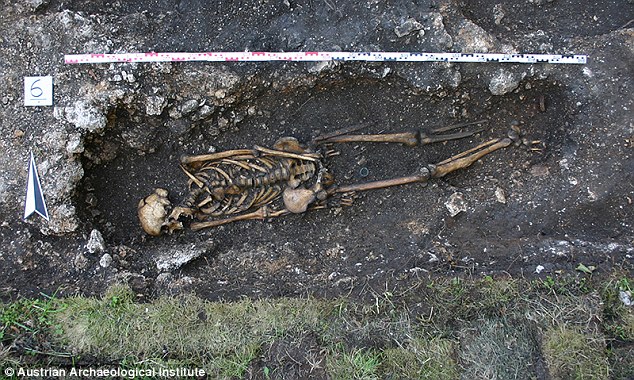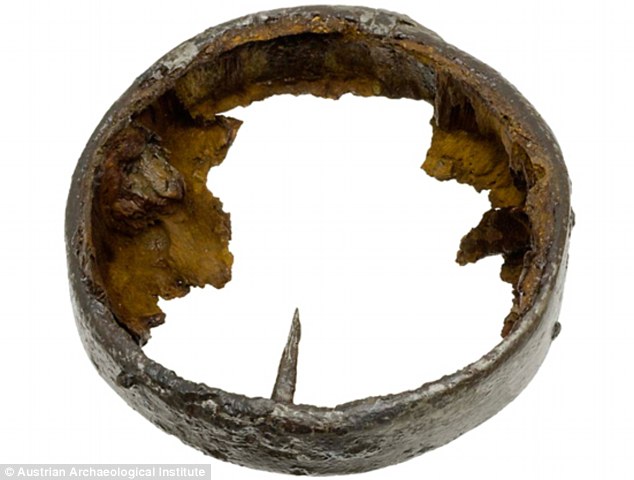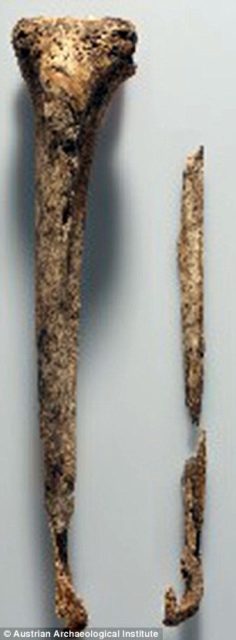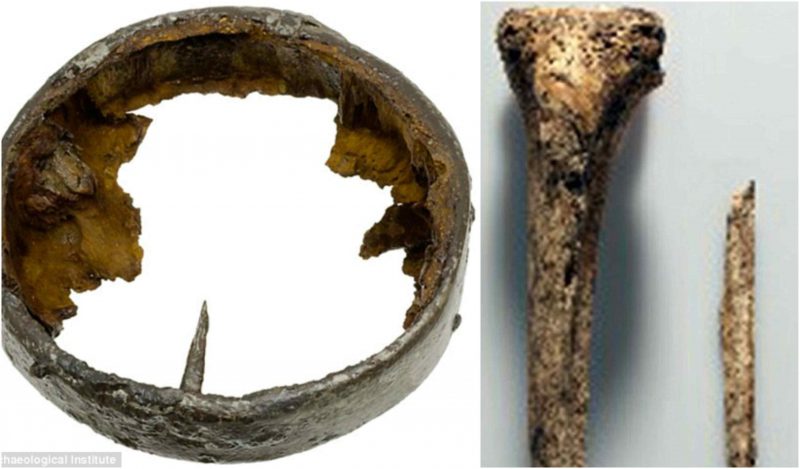Back in 2013, researchers and archaeologists uncovered a skeleton with a rather interesting feature. The skeleton dates back to over 1,000 years ago and shows that the person had used a prosthetic foot. This tells the experts at the site that prosthetics were being used as long ago as the 6th century.
The experts had found the remains of what they believe to be a middle-aged man who had died in that century. His left foot and ankle had actually been replaced by a wooden prosthetic.
The archaeologists at the site were from the Austrian Archaeological Institute. They ended up finding the remains while excavating a site in Hemmaberg, Austria. After doing further analysis, they found that the skeleton had dated back to the Frankish period, around the 6th century AD.

One of the archaeologists wrote that the middle-aged man had been missing his left foot right above the ankle. In the place above the ankle was an iron ring and wooden remains. Due to how long the man had been there, the wooden prosthetic rotted over time, only leaving shards of the wood.
Another archaeologist stated that the remains and the ring represent one of the oldest examples of the prosthetic limb that people wore in Europe. Although there have been older prosthetics found, this is the oldest found in Europe. Other prosthetic devices had been dated back to the Ancient Egyptian Empire and other sources were used in the Greco-Roman world. Archaeologists explained that the archaeological evidence found prior to the 2nd millennium AD is almost nonexistent.
A bio-archaeologist who worked on the dig, Michaela Binder, said that when he had first found the prosthesis, he thought it was quite special. Something like this is very rare to find.
The man’s remains were actually found in a small group of graves. Many of the other remains had belonged to children. The man had been buried with a sword and brooch. As stated above, the only thing that was left of the prosthetic was the metal ring which was to keep the wooden part in place. The iron ring had measured about three inches in diameter. There had also been dark staining on the lower leg bones, which was most likely from a pouch that was used to strap the prosthetic to the man’s leg.

Source: Austrian Archaeological Institute
One of the major reasons why archaeologists think finding a prosthetic is so special is because many people didn’t survive the amputation process long enough to get a prosthetic limb. Many of those people either died from complications from the major surgery, or they caught an infection since the practice was not a very clean process.
Binder explained that losing a foot, especially when it wasn’t cut through the joint but through the bone, would have caused a lot of major vessels to be cut. This would have led to a lot of bleeding and if the doctors didn’t haven’t gotten the bleeding under control, the person most likely would have died. He added that it the wound would have most likely been very prone to infection.
He also explained that this was another reason why very few prosthetics have been found. If a person died before getting fitted with a prosthetic, there was no reason to be buried with it.
Fascinatingly, Binder said that finding the remains of someone who had survived an injury such as the man’s and one who had lived to use the prosthetic blows his mind. The first prosthetic evidence was found on the foot of an Egyptian mummy. The researchers at the site had found a big toe removed and replaced with a wooden one.
The earliest evidence of a leg prosthetic was in a Roman grave in Italy’s Santa Maria di Capua that dated from 300 BC. Other Egyptian mummies that were found with prosthetic toes made from either wood or a plastic linen which was made for the funeral masks.
After finding the man’s remains, Binder did a CT scan and radiography scan. He found that the healing in the bones from both legs had differed in bone density. This suggests that when the man had first gotten his prosthetic, he didn’t use it the right way.
Experts are not sure why the man’s foot was removed in the first place. Researchers believe that it could have been removed due to an accident or as a form of punishment, torture, or violence.
However, Binder explained that the man was probably not punished for crimes since he had been buried in a grave near a church and with a sword. This suggests the man held high status. This speculation also means that if the man had been a criminal, he most likely wouldn’t have gotten a prosthetic after performing a crime.

Binder found other clues about the man’s life. It may be that the man suffered from blunt force trauma, causing a large hematoma which healed. The man also had osteoarthritis and had overused muscles in his hips and spine, suggesting he was a horseback rider.
Binder believes that the man had probably lost his foot in a Medieval battle. The man might have been attacked by an on-foot soldier and fallen victim to having his foot cut off while he was still on his horse.
